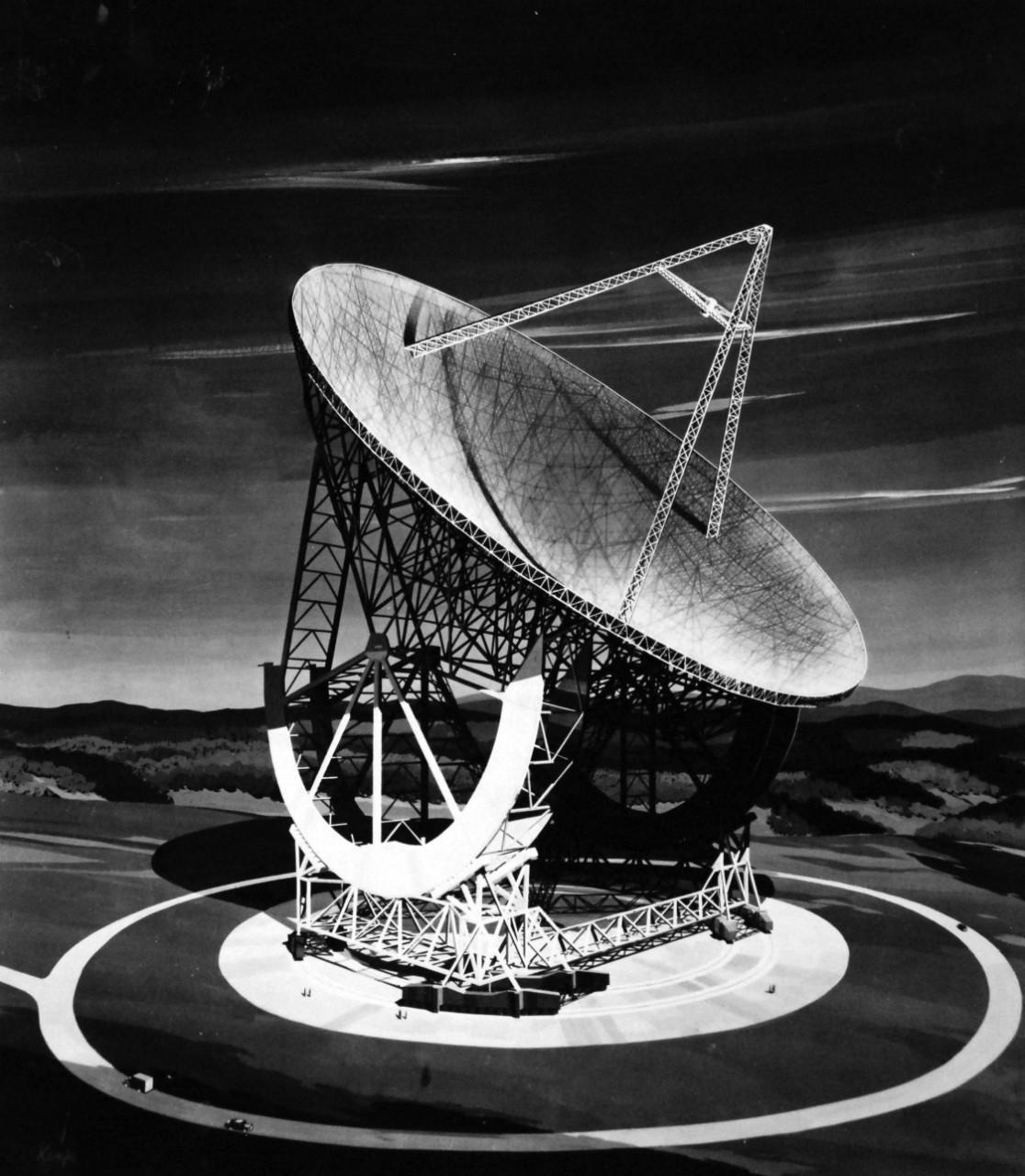Caption:
USN 710538: Gigantic Radio Telescope Being Constructed for the U.S. Navy, 22 September 1959. The world’s largest radio telescope being constructed for U.S. Navy, near Sugar Grove, West Virginia, after scheduled completion in 1962. The 20,000 ton facility, to be known official as Naval Radio Research Station, will give the U.S., the world’s most powerful “ear on the universe.” It will enable Navy scientists to tune in on the radio signals emitted by astral bodies in 19 times the distance probed by the 200-inch optical telescope at Mount Palomar, California, the instruments aluminum mesh reflector dish will have a 600-foot diameter, twice the length of a football field, and an area exceeding seven acres, rotation of the huge arcs supporting the dish complex will elevate the reflector at any angle above the horizon the entire structure will rotate on rollers riding circular tracks on the ground. Thus, the dish can be aimed at any point in the sky above the horizon. The telescope will be electronically controlled from a nearby laboratory operations building. Contracting agency is Bureau of Yards and Docks acting for Naval Research Laboratory whose scientists formulate basic specifications and other criteria after years of intensive research. This artist’s conception shows the world’s largest radio telescope now being erected by the U.S. Navy on a 1,500 acre size near Sugar Grove, West Virginia. The $79,000,000 facility is being designed by Grad, Urbahn, and Shelye, New York Architects Engineers. The telescopes immensity may be gauged by comparison with drawn to scale to people and vehicle in the photograph. Note, building was halted in 1962 and was never completed. Official U.S. Navy Photograph, now in the collections of the National Archives.




